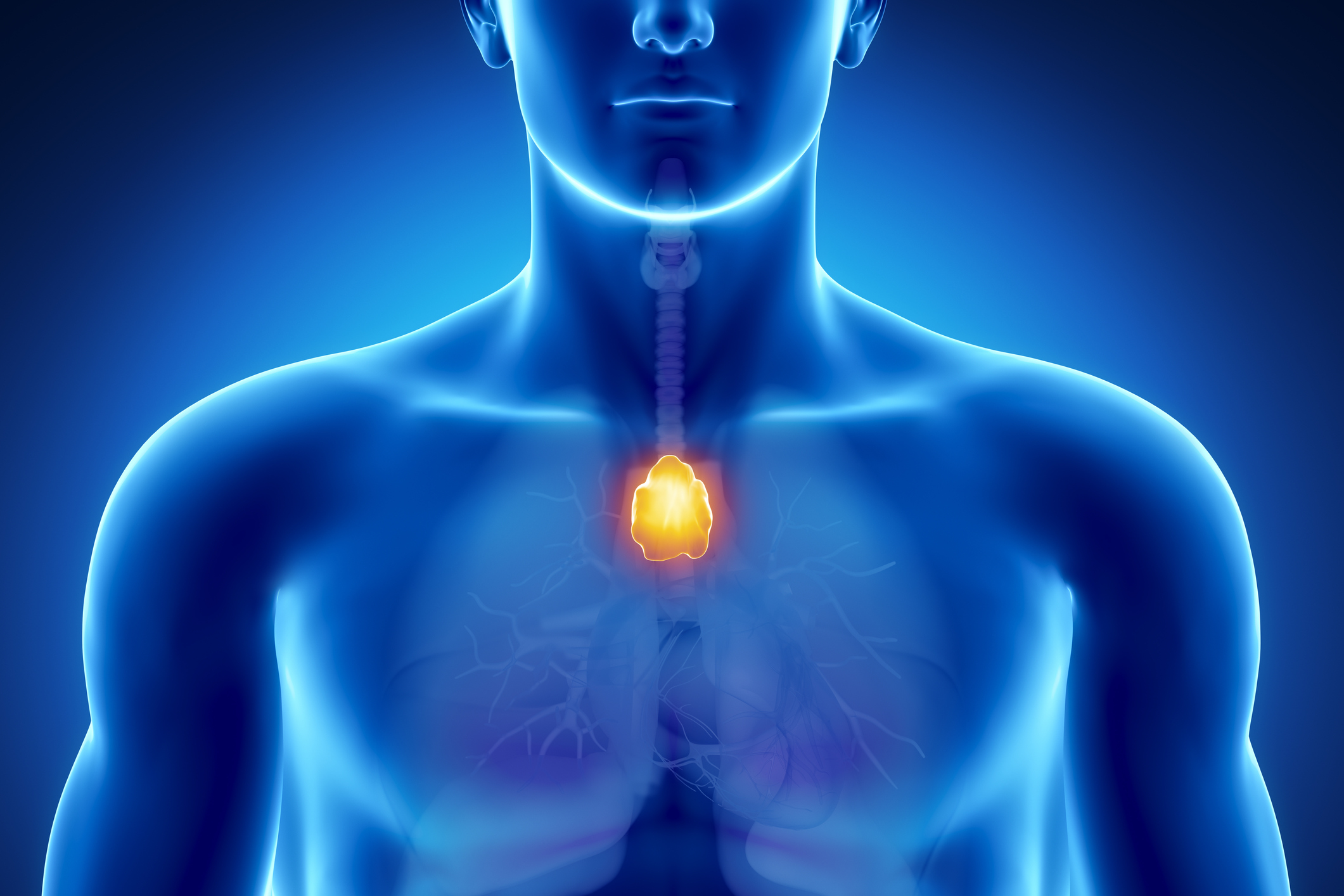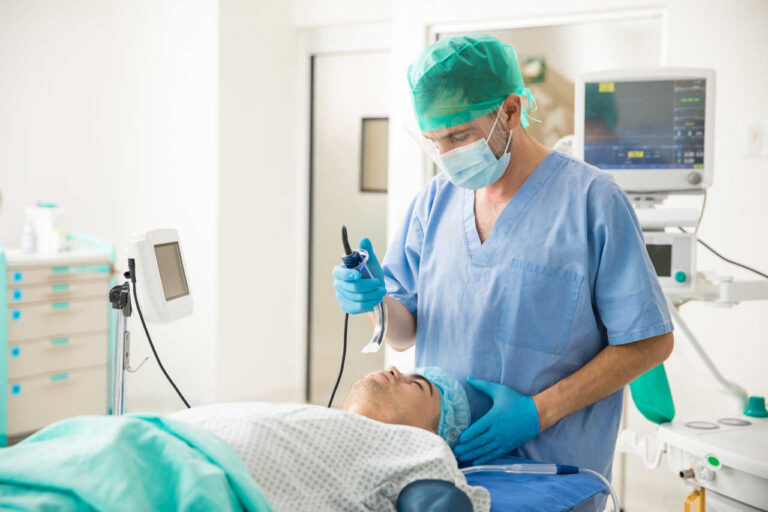
Myasthenia gravis (MG) is an autoimmune disease that causes muscle weakness. In this condition, your body’s defense system mistakenly attacks nerve receptors. As a result, your eyelids, eye movements, breathing, swallowing, and limbs are affected.
Makipag-usap sa isang Espesyalista Tungkol sa Tulong sa Copay
Thymoma is a rare tumor that grows in a gland called the thymus. There is a link between myasthenia gravis and thymoma. Many people with MG also have thymoma and vice versa. In this article, we will learn about myasthenia gravis and thymoma, their connection, and treatment options.
What Is Myasthenia Gravis (MG)?
Myasthenia gravis (MG) is a rare progressive autoimmune disease. Every year, it affects up to 30 persons in every 1 million [1]. In this condition, the body’s immune system mistakenly attacks the receptors on muscle cells. As a result, the signals from the brain can’t reach the muscles effectively. This leads to weakness and fatigue in the facial, cranial, and bodily muscles.
The symptoms of MG can vary in severity. People experience increasing muscle weakness during activity, which is relieved during rest. There is no cure, but there are options like medication, therapy, and surgery to manage the symptoms and improve the quality of life.
What Is Thymoma?
Thymoma is a rare type of tumor that develops in the thymus gland. The thymus gland is located in the chest, just behind the breastbone. This gland plays a crucial role in the body’s immune system. It promotes the maturation of T cells, which are a type of white blood cell that fights infections.
Thymomas usually grow slowly, and it can take months or years to see significant growth. They do not cause any symptoms in the early stages. However, as they grow large, they can cause symptoms like chest pain, coughing, difficulty breathing, etc.
What Is the Link Between Myasthenia Gravis and Thymoma?
Myasthenia Gravis (MG) is a disease in which the body’s immune system attacks areas where the nerves communicate with muscles. As a result, the lack of communication causes muscle weakness and fatigue. On the other hand, a thymoma is a rare tumor that grows in the thymus gland. This gland helps the immune system to work properly.
Thymoma is often associated with myasthenia gravis (MG). Data shows that about half of the thymoma patients develop MG, and about 15% of MG patients develop thymoma [2].
However, doctors do not exactly know whether thymoma causes MG or MG causes thymoma. However, a compelling theory suggests that when there is a problem with the thymus gland (like thymoma), it sends confusing signals to the immune system. As a result, the immune system attacks the receptors on the muscle cells, and thus MG occurs.
Thymomas are more common in patients who develop MG at a younger age, between 30 and 60. If MG starts when someone is older than 60, they are less likely to have a thymoma [3].
Symptoms of Myasthenia Gravis and Thymoma

The symptoms of myasthenia gravis (MG) and thymoma can vary depending on the individual and the severity of the condition.
MG causes muscle weakness that gets worse with activity and improves with rest. This leads to symptoms like:
- Trouble eating or swallowing
- Malabo ang paningin
- Drooping eyelid
- Arm and leg weakness
- Malabo na pananalita
- Trouble breathing
People with MG must undergo tests like X-rays to discover thymoma’s presence. In the initial stages, thymoma doesn’t show any symptoms. As its size gets bigger over time, it may lead to symptoms like:
- Pananakit ng dibdib
- Coughing
- Hirap sa paghinga
- Kahirapan sa paglunok
Please consult a healthcare professional if you have symptoms related to either condition. They can give you a proper diagnosis and treatment.
Get IVIG Copay Assistance | IVIG Financial Assistance
Treatment of Myasthenia Gravis and Thymoma
For myasthenia gravis, there is no cure. However, some treatment options exist to manage the symptoms and enhance quality of life. Treatment options for MG include:
Mga gamot: Medications can improve muscle strength and reduce symptoms. Doctors commonly prescribe medicines like cholinesterase inhibitors, corticosteroids, and monoclonal antibodies.
Pagpapalitan ng Plasma: This is a procedure to remove harmful antibodies from your blood plasma.
Intravenous Immunoglobulin (IVIG): IVIG provides a concentrated dose of antibodies obtained from donated blood plasma. It can help reduce the symptoms of MG and improve muscle strength.
Operasyon: Whether or not you have a thymoma, surgical removal of the thymus gland can help a lot in cases of MG [5].
Treatment for thymoma typically involves surgery. If the thymoma is non-cancerous, then surgical removal of the thymus gland is enough. However, if the thymoma is cancerous, additional treatment, such as chemotherapy, is recommended along with surgery.
Mga FAQ
Here are some frequently asked questions about myasthenia gravis and thymoma:
1. How Is Myasthenia Gravis Diagnosed?
To diagnose myasthenia gravis, doctors use a combination of tests. Diagnosis often involves blood tests to check for specific antibodies. It also involves nerve conduction studies and electromyography (EMG).
2. Is Thymoma Always Cancerous?
No. Thymomas can be benign (non-cancerous) or malignant (cancerous). Fortunately, the majority of them are non-cancerous. In both cases, you need regular monitoring and proper treatment.
3. Are There Any Lifestyle Changes That Can Help Manage Myasthenia Gravis Symptoms?
Yes, MG patients can live better lives if they learn to manage their stress. They should get adequate sleep, eat a balanced diet, and avoid things that worsen their symptoms (such as certain medications or extreme temperatures).
4. Does Myasthenia Gravis Affect Pregnancy?
Myasthenia gravis (MG) typically does not cause significant problems during pregnancy. Reports suggest that women with MG do not have a higher chance of miscarriage or premature delivery [4].
MGA SANGGUNIAN:
- Dresser, L., Wlodarski, R., Rezania, K., & Soliven, B. (2021). Myasthenia gravis: epidemiology, pathophysiology and clinical manifestations. Journal of Clinical Medicine, 10(11), 2235. https://doi.org/10.3390/jcm10112235
- Romi, F. (2011). Thymoma in myasthenia gravis: From diagnosis to treatment. Autoimmune Diseases, 2011, 1–5. https://doi.org/10.4061/2011/474512
- Myasthenia Gravis Clinical Overview | MGFA. (n.d.). https://myasthenia.org/Professionals/Clinical-Overview-of-MG
- Myasthenia gravis during pregnancy. (2012, December 1). PubMed. https://pubmed.ncbi.nlm.nih.gov/23242891/
- Catâneo, A. J. M., Felisberto, G., & Catâneo, D. C. (2018). Thymectomy in nonthymomatous myasthenia gravis – systematic review and meta-analysis. Orphanet Journal of Rare Diseases, 13(1). https://doi.org/10.1186/s13023-018-0837-z












